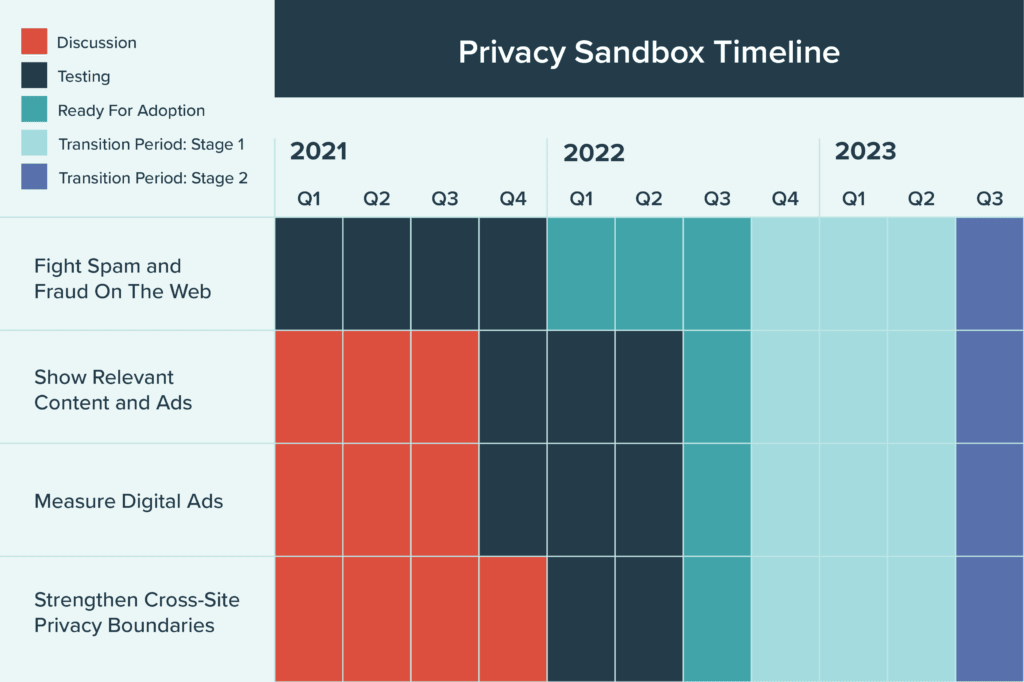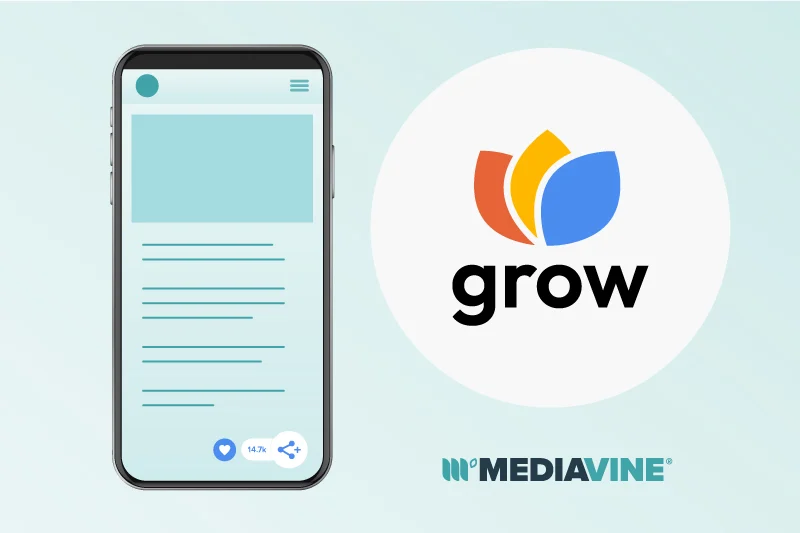Privacy Sandbox: Revised Timeline Released By Google


As we shared earlier this summer, Google delayed its roadmap for phasing out support for third-party cookies, moving its own timeline back by nearly two years.
Google shifted Chrome’s plan to deprecate third-party cookies because, to make a long story short, we need additional time as an industry to get it right.
One component of Google’s vision for a post-cookie world is its Privacy Sandbox initiative, which aims to build technologies that protect user privacy while still allowing for effective ad targeting.
As an industry, we can and should do hard things. But this is a particularly hard thing and will take considerably longer than Google’s original, early 2022 goal to be viable at scale.
Acknowledging this reality, Google released an updated timeline in late July 2021.
In general terms, the Privacy Sandbox will be rolled out in two phases:

When we say “phasing out,” we mean that Chrome will start to decrease the duration of third-party cookies (up to a year at present) from months to weeks to days to nothing at all.
That process will take place over the course of a year, bringing us to late 2023.
In more granular terms, Privacy Sandbox initiatives are split into four categories: combatting online spam/fraud, showing relevant content and ads, measuring digital ads and strengthening cross-site privacy boundaries.
Thus far, Mediavine has focused most on the bird-themed APIs designed to display relevant content and ads without cookies: FLoC and FLEDGE.
Currently, FLoC origin trials have closed, with widespread testing scheduled to begin later this year and adoption tentatively planned for late 2022, barring further delays.
With regard to the Privacy Sandbox, Mediavine will keep you apprised of any changes to this timeline extension or developments with any of its specific elements.
What publishers need to remember is that the end of third-party cookies represents a fundamental shift in the ecosystem — and that Privacy Sandbox is just one part of the solution.
We’re grateful to have more time, as an industry, to ensure a smoother transition, but cookies are indeed going away, and ushering in a new, privacy-centric era requires a multifaceted approach.
The most important and actionable step you can take today is to start building first-party data.
Unlike Google’s Federated Learning of Cohorts (FLoC), or other concepts it can shoehorn into avian acronyms, this is a solution you can be part of without technical expertise or vast financial resources.
First-party data is information that the publisher (your site) gathers and provides to advertisers about readers rather than advertisers relying on third-party data via the cookies of today.
How do you do that? It all starts with Grow.

Grow is Mediavine’s audience engagement suite, providing enhanced website experiences and features to readers so that they will log in — thus consenting to personalized ads.
Data from these consenting — or authenticated — users will be much more valuable than those cohorted by the Privacy Sandbox, or even readers targeted by cookies right now.
Glad you asked.
The most obvious answer is that iOS and other browsers have already axed cookies. Authenticating users will help you better monetize traffic from non-Chrome browsers immediately.
Secondly, many Grow features will improve user experiences of all readers, boosting your earning potential thanks to longer sessions and additional content consumed.
Most importantly of all, building first-party relationships with readers — and harnessing enough of the resulting first-party data to make a material difference — takes time.
Yes, we now have more of it, but authenticating even 5 to 10% of your website traffic (the ambitious goal we’ve set for Grow) is going to be a prolonged strategy.
With Google’s announcement, we have a longer period in which to reach the promised land — but time is still of the essence. If you’re a Mediavine publisher, why not enable Grow in your Dashboard today?
With features like Recommended Content, Search, Subscribe and more, thousands of MVPs are already providing audiences with enhanced experiences and improving website performance.
All while playing the long game and positioning themselves for success not just next month or next year, but in the privacy-first world that will be here soon enough.
Seriously, what are you waiting for?
Stay up to date with the latest from Mediavine
As the digital advertising landscape evolves, the need for effective data management and compliance has never been more critical. As part of our commitment to providing exceptional solutions for our …
Welcome to the much-anticipated release of the fifth-annual edition of “The Best eCPM Days of the Year” calendar. Each year, we analyze historical trends to provide publishers with a graphical …
“Let’s talk about politics.” We know. This is a phrase absolutely no one wants to hear uttered around the dinner table or backyard barbecue these days. But hear us out. …